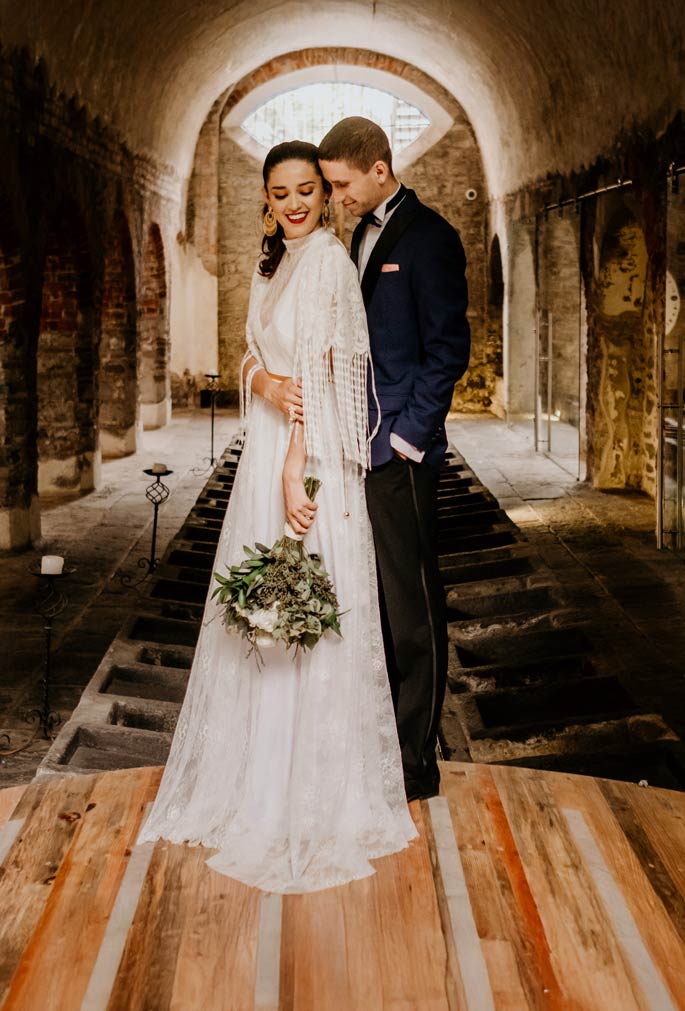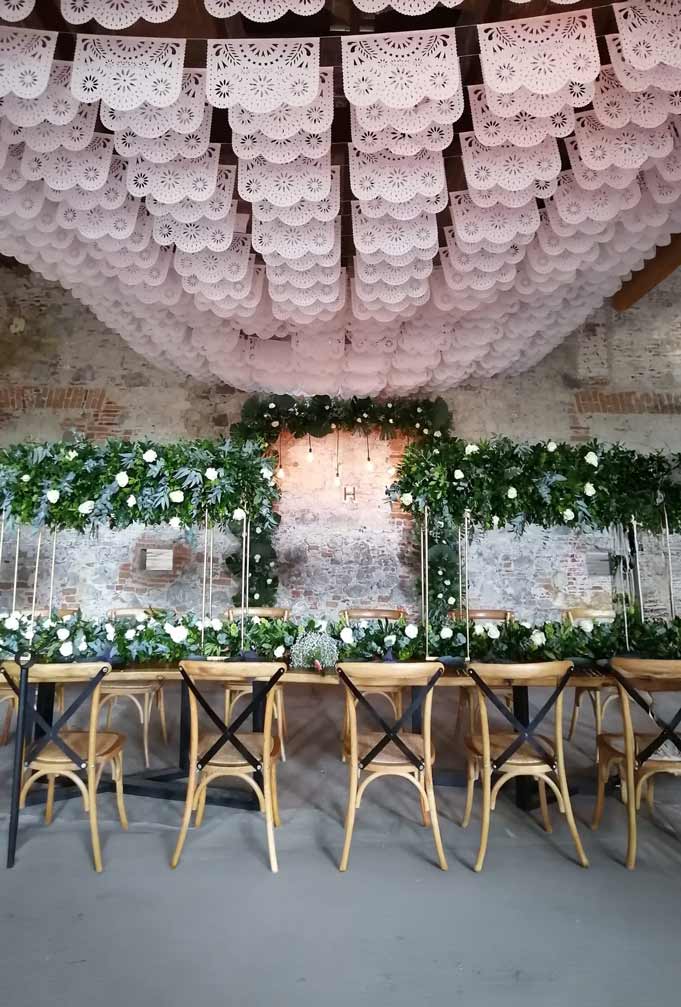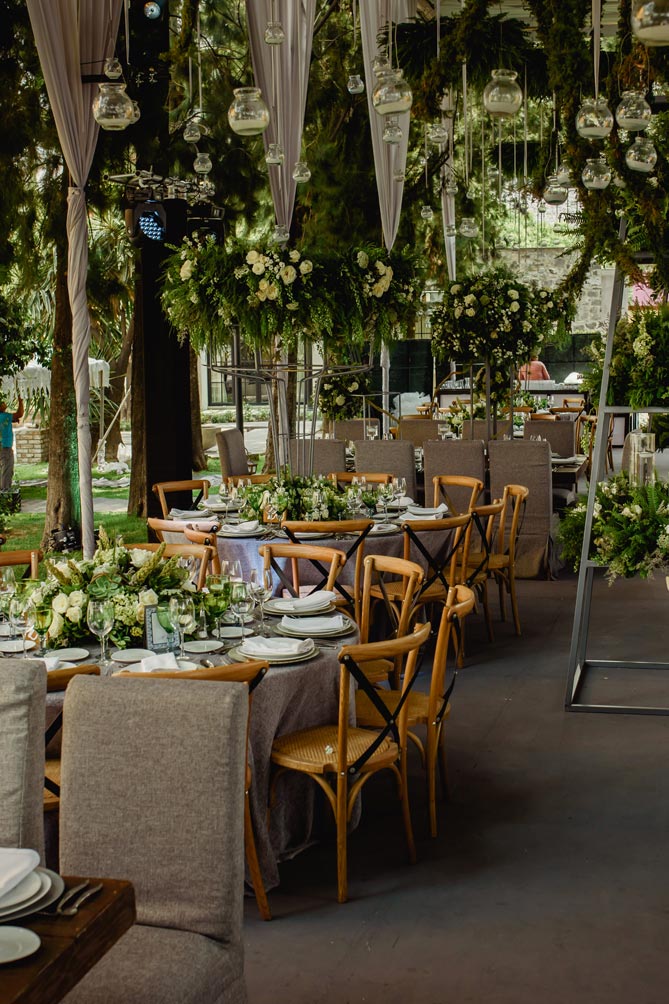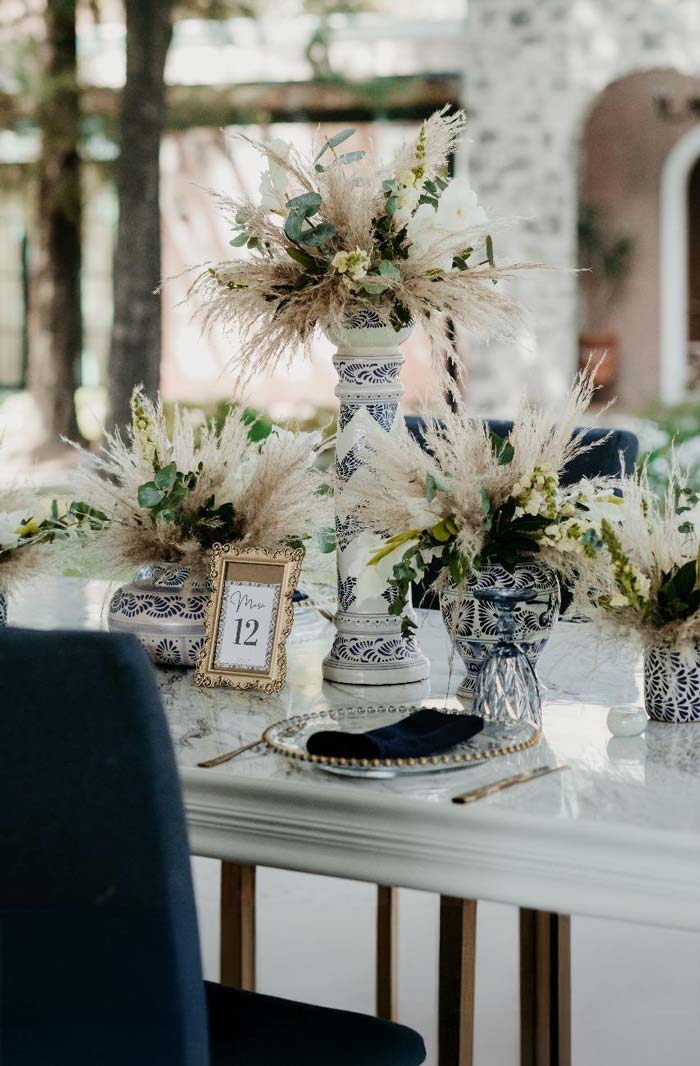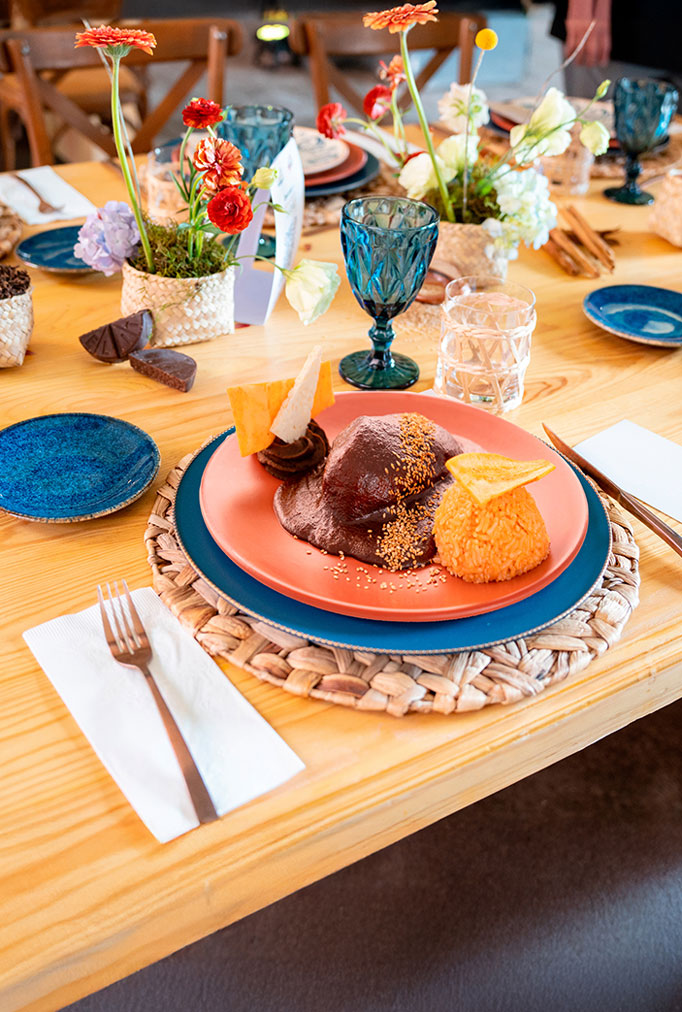
The traditional dishes from Puebla that are an indispensable part of your wedding dinner
Take a tour through Puebla’s culinary heritage—rich mole sauces, loaded chalupas, cemita sandwiches, and mezcals—for an authentically flavorful feast.

Continua en la historia
 Desliza a la izquierda para continuar
Desliza a la izquierda para continuar

◆◆◆◆◆◆◆◆◆◆◆◆◆
Getting married in Puebla isn’t just about tying the knot among baroque cupolas and majestic scenery. It is also celebrating with your whole heart… and stomach! This Mexican state is world-renowned for its rich cuisine, historic heritage, blending cultures, and unique flavors. So, Puebla’s traditional dishes are a key part of your wedding menu. More than being just another option, they are a way of paying homage to Puebla during your celebration of love.
Including the flavors of Puebla in your wedding will not only elevate the culinary experience but also leave your guests’ hearts and taste buds with delectable memories. From traditional mole sauces to emblematic candy, each bite will be a sensory experience turning your celebration into an unforgettable event.
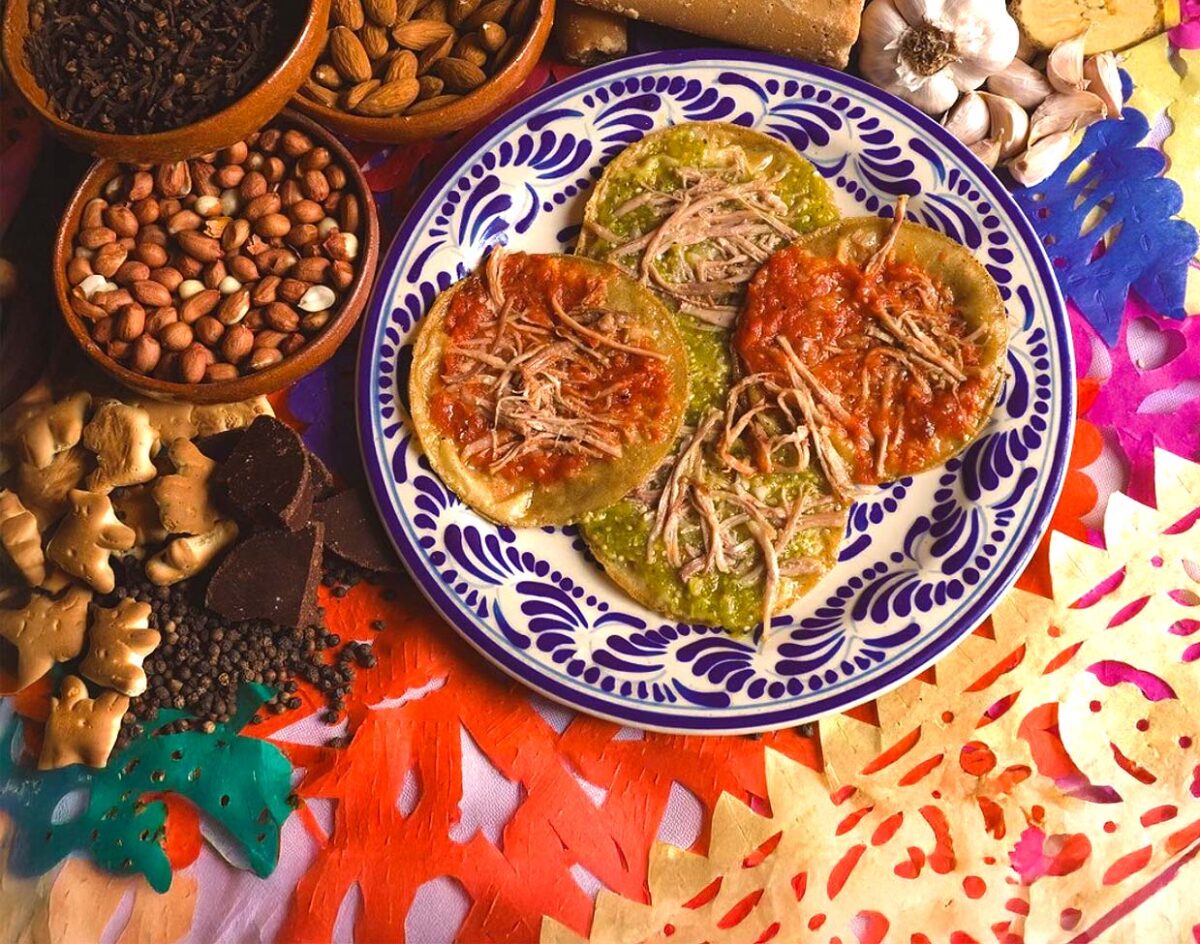

◇◇◇◇◇◇◇◇◇◇◇◇◇◇◇
While smell might be the sense most closely linked to memory, when you combine it with taste, science says that memories are more strongly embedded, especially when they are associated with intense emotional experiences. Like a destination wedding! Likewise, traditional dishes evoke strong ties to authentic flavors, imbued with history and tradition.
▌Besides, this doesn’t mean sacrificing style and elegance in your wedding. These days, many caterers who specialize in destination weddings offer these classic options that meld perfectly with your wedding, while adding culinary richness.
Puebla’s Traditional Dishes
◆ for Your Wedding ◆
Mole sauces, chalupas piled with toppings, cemita sandwiches, glasses of mezcal, and traditional candy make up an unforgettable celebration to seduce the senses. So, give your menu a delicious touch of local cuisine. Read on to learn more about all your options.
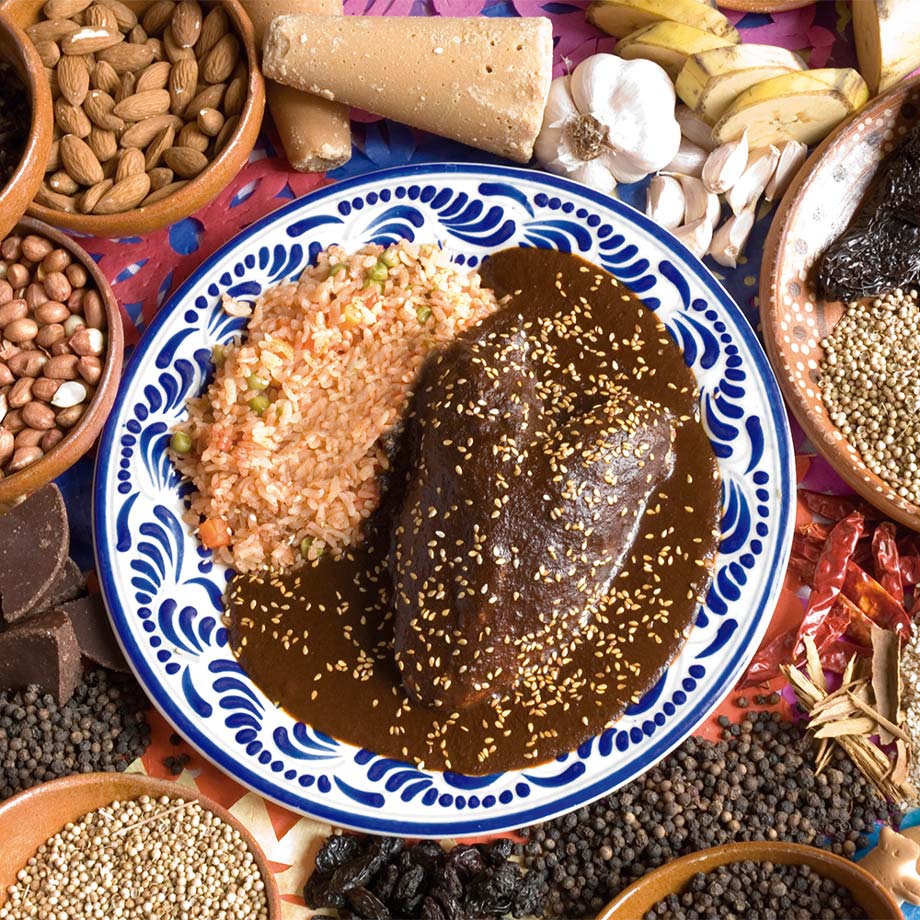
Puebla’s Mole: The Star Dish
━━━━━━━
▌It is impossible to talk about Puebla without mentioning mole. This delicacy is a regional icon. While the stories about its true origin vary, they have become long-lasting legends.
The most famous of these says that it was the nun Sister Andrea de la Asunción, in Santa Rosa de Lima convent in Puebla, who concocted Puebla’s delicious mole in the 17th century. She was trying to come up with a special dish honoring the visit of the Viceroy of New Spain, Tomás Antonio de Serna. Legend has it that the original recipe used around 100 ingredients, including chili peppers, spices, and chocolate, which were artfully combined to create mole poblano.
◆◆◆◆◆◆◆◆◆◆◆◆◆
Nevertheless, it has been discovered that mole didn’t just originate in the state but dates back to pre-Hispanic cultures. Centuries ago, indigenous people mixed a variety of chili peppers, squash seeds, hierba santa (Mexican pepperleaf), and tomatoes to create a sauce called mulli, which was normally served with turkey as an offering to the gods.
Later, when the Spanish arrived in what is now Mexico, they introduced new elements that were added to the recipe, such as grey pepper, anise, and cinnamon. During that time, the name changed from the Nahuatl molli or mulli to mole. As time passed, chefs adapted and perfected their recipes.
⎯⎯⎯⎯⎯⎯⎯⎯⎯⎯⎯⎯⎯⎯⎯⎯⎯⎯
These days, mole is a complex, sophisticated dish which is not just thrown together. It is a key part of Puebla’s cuisine, and that of all Mexico. For this reason, whether the mole is served with turkey, chicken, or pork loin, it symbolizes celebration, gathering, and family because it was and is a main dish in celebrations such as weddings. So obviously it has to find a place on your menu!
⎯⎯⎯⎯⎯⎯⎯⎯⎯⎯⎯⎯⎯⎯⎯⎯⎯⎯
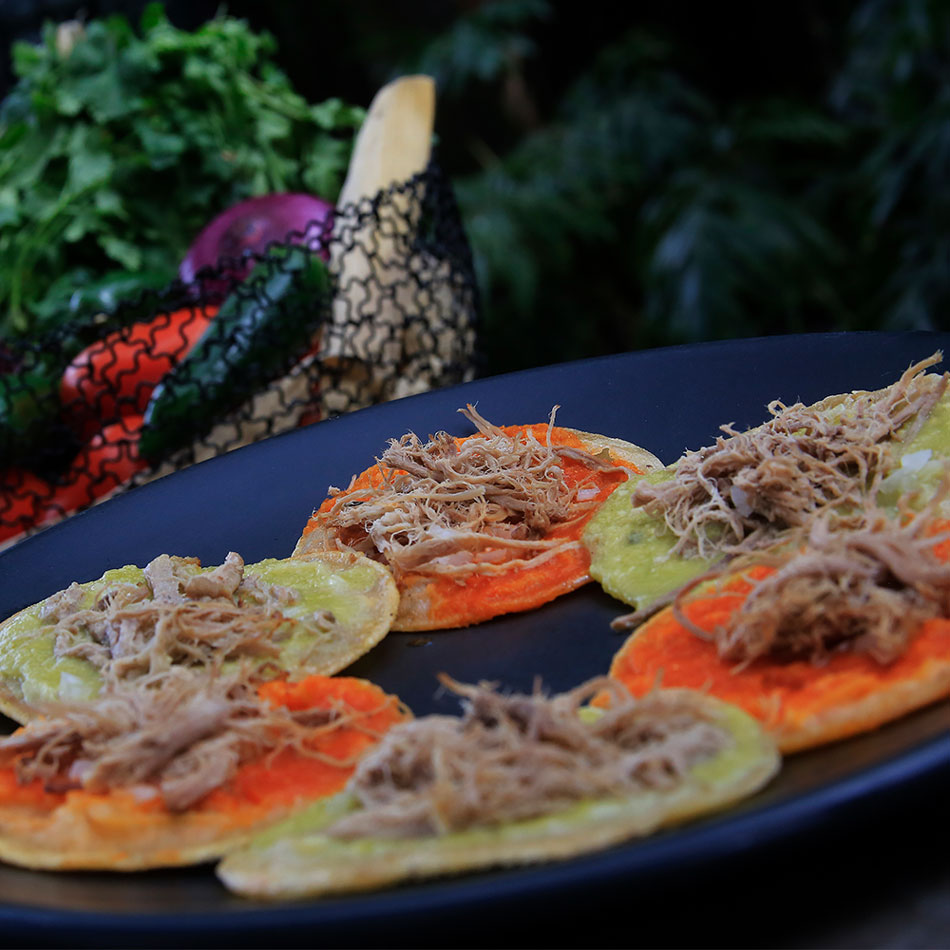
Chalupas: The Perfect Appetizer
━━━━━━━
▌After learning more about mole, the ideal main dish for your nuptial dinner, let’s discover more about Puebla’s typical appetizers.
Despite their humble appearance, chalupas are a famous part of the state’s cuisine, and they are perfect for pre-ceremony cocktails or an appetizer rounding out the menu. Your guests will be intrigued! The combination of a corn base with lard, pork, red or green salsa, and onion perfectly represents Puebla’s daily flavors. However, these delicious bites are also found in famous restaurants in all their many variations.
◆◆◆◆◆◆◆◆◆◆◆◆◆
As with mole sauces, chalupas’ roots are unclear, and there are several stories surrounding them. One states that the recipe was invented by monks who used leftover chicken and mixed it with corn dough. But they thought it tasted a bit dry, so they added salsa and onion.
It is also said that these monks were close to the San Francisco River, where chalupas (small boats or canoes) were used to get around during pre-Hispanic times. The shape inspired the name. On the other hand, some say women set up stands along the riverbanks, where they prepared and sold small tortillas bathed in salsa, with pork, onion, and hot lard, giving them fabulous flavor. There are other stories as well, but no one is truly sure where chalupas originated.
⎯⎯⎯⎯⎯⎯⎯⎯⎯⎯⎯⎯⎯⎯⎯⎯⎯⎯
However, what we can say is that wherever they may come from, a wedding in Puebla would not be complete without chalupas.
⎯⎯⎯⎯⎯⎯⎯⎯⎯⎯⎯⎯⎯⎯⎯⎯⎯⎯
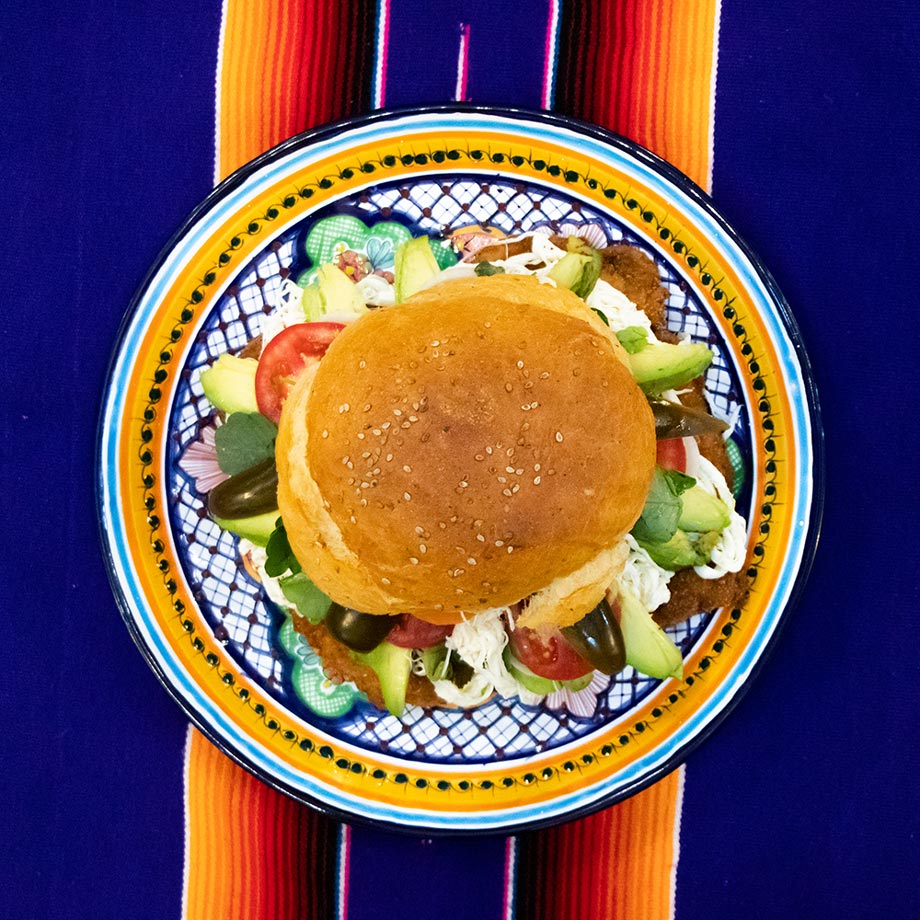
Cemitas: An Unforgettable
After-Party Bite
━━━━━━━
▌Are you going to dance the night away after your wedding? You will definitely need an after-party, or tornafiesta as it is known in Mexico, where something hearty and delicious is served. After so much toasting and dancing, everyone will be hungry, so you will want another round of food to recharge and settle stomachs. These dishes are generally served an hour before the party wraps up.
Cemitas are sure to be a delicious way to wrap up a night of celebration while keeping things easy. Even better, they are a traditional dish in Puebla. These sandwiches feature crunchy bread stuffed with pork—either crispy carnitas or marinated and slow roasted—cheese, avocado, and cold cuts. Classic cemitas, however, are piled with thin pork cutlets and soft cheese. And always, always with sesame sprinkled on the bun.
◆◆◆◆◆◆◆◆◆◆◆◆◆
The name cemita comes from the buns used for these sandwiches which date back to the colonial period. Later, as with other breads introduced by the Spanish, the French contributed their own twist.
“Cemitas are inherently from the Iberian Peninsula, and they come from the blending of two bread varieties that the city of Puebla sent as tribute to the Spanish crown during the colonial period,” says Esperanza Torral in the book El origen de las cemitas (Cemitas’ Origin).
⎯⎯⎯⎯⎯⎯⎯⎯⎯⎯⎯⎯⎯⎯⎯⎯⎯⎯
This bun’s popularity grew so much that today it is one of Puebla’s most important dishes at the national level. So, for these and other reasons, including these sandwiches at your wedding is always a great choice. Moreover, if you want to give them a unique spin, you can serve several varieties or set up “make your own cemita” stations so everyone can have their sandwich the way they like it.
⎯⎯⎯⎯⎯⎯⎯⎯⎯⎯⎯⎯⎯⎯⎯⎯⎯⎯
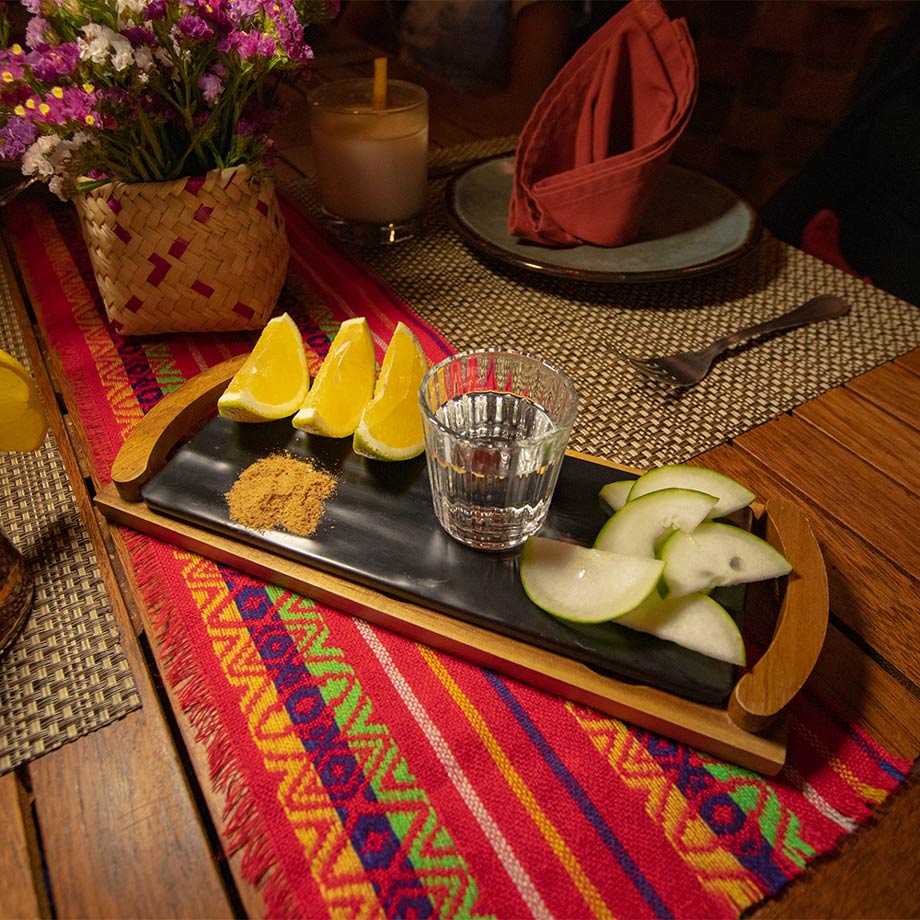
Mezcal: For a Toast that Says It All
━━━━━━━
▌Elegant, nuanced, and filled with character… Puebla’s mezcal has become a favorite for unique wedding celebrations. 116 of Puebla’s municipalities have their own Designation of Origin certification for their mezcal, making it more than a drink. It is a legacy that is born out of the soil and hard work of master mezcalero distillers.
In fact, Puebla is the second-largest producer of mezcal in all Mexico. There are 50 registered brands of this age-old drink in the region. All are certified for their sale and consumption.
◆◆◆◆◆◆◆◆◆◆◆◆◆
It is believed that mezcal has been distilled in Puebla since pre-Hispanic times, when agave plants had medicinal and ritualistic uses. But, with the arrival of the Spanish, new distilling techniques were introduced. Ever since, mezcal has been produced artisanally using methods that have been passed down over generations. Furthermore, a range of agave species are used, including espadín, espadilla, and tobalá, among others. This leads Puebla’s mezcals to exhibit a wide range of aromas and flavors.
Therefore, because of its unique characteristics and qualities, whether in shots, paired with dinner, as an ingredient in sophisticated cocktails, stocking a bar, or even as a wedding favor, this handcrafted spirit pairs perfectly with your vows.
⎯⎯⎯⎯⎯⎯⎯⎯⎯⎯⎯⎯⎯⎯⎯⎯⎯⎯
So, delight your guests with local labels because each sip carries with it a bit of Puebla’s history, with notes of agave and tradition. Above all else, mezcal must be part of such a special day! Let the agaves’ spirit celebrate with you.
⎯⎯⎯⎯⎯⎯⎯⎯⎯⎯⎯⎯⎯⎯⎯⎯⎯⎯
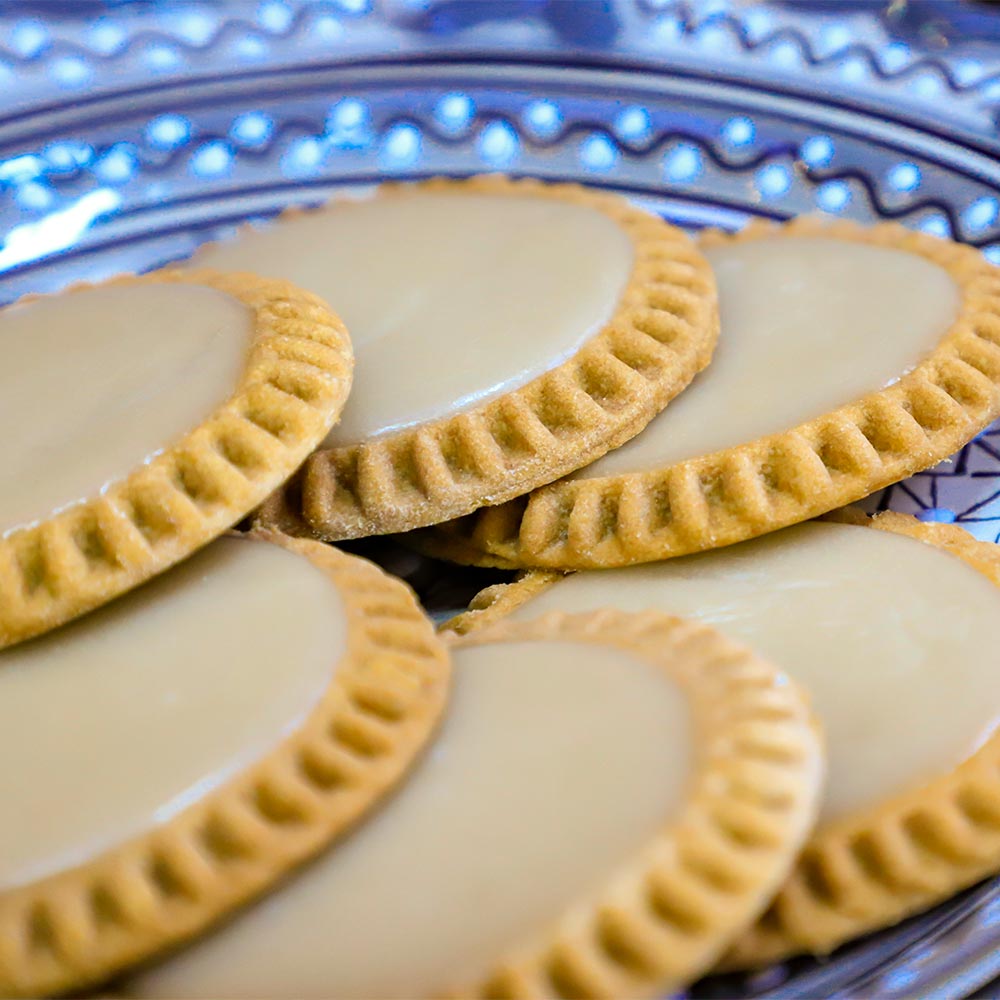
Puebla’s Distinctive Candy:
A Sweet Ending
━━━━━━━
▌Dessert leaves the last impression, and in Puebla, this sweet final flavor is found in soft camotes (sweet potato candy); tortitas de Santa Clara (filled cookies); unusual borrachitos (liquor-infused candy); colorful cocadas (coconut candy); chewy turrón (nougat); muéganos (caramelly balls of crispy dough bits); rich jamoncillo (milk fudge); macarrones (milk candy); crunchy palanquetas (similar to peanut brittle); milk, pine nut, almond, and pecan candy; and so much more.
Just like with other specialties from Puebla, the traditional candy was concocted in the colonial era, specifically in the convents where nuns created these confections. In fact, the candy is a clear result of the mix of cultures, with Arab, Spanish, and indigenous influences adding to the arrival of sugarcane.
Although every state in the country has its own unique candy, it is true that Puebla is especially known for its great variety of confections, with irresistible aromas, flavors, colors, shapes, and designs.
⎯⎯⎯⎯⎯⎯⎯⎯⎯⎯⎯⎯⎯⎯⎯⎯⎯⎯
Currently, in addition to wedding cakes, candy tables have become very popular and almost obligatory in celebrations. But what if you included some of Puebla’s traditional candy with the run-of-the-mill jellybeans and chips? A table bursting with local sweets wouldn’t only be eye-catching but also a colorful treat for the senses. Another great idea is to pass out little personalized boxes of candy so your guests can take their favorite sweet treat home with them.
⎯⎯⎯⎯⎯⎯⎯⎯⎯⎯⎯⎯⎯⎯⎯⎯⎯⎯
◆◆◆◆◆◆◆◆◆◆◆◆◆
You will fall in love with Puebla for its sights, its soul… and for its flavors. Including traditional local food as part of your wedding will not only give your guests delicious memories, but also bring living traditions that honor local, authentic customs made with love right into the heart of your celebration.
⎯⎯⎯⎯⎯⎯⎯⎯⎯⎯⎯⎯⎯⎯⎯⎯⎯
Speaking about Mexican cuisine
means speaking about Puebla’s dishes.
⎯⎯⎯⎯⎯⎯⎯⎯⎯⎯⎯⎯⎯⎯⎯⎯⎯

